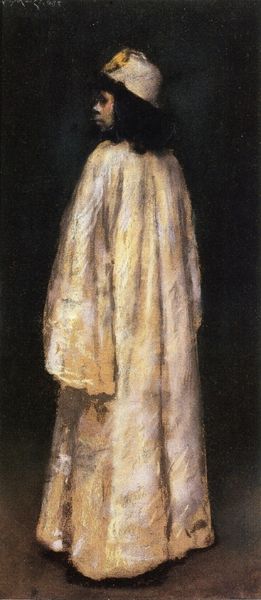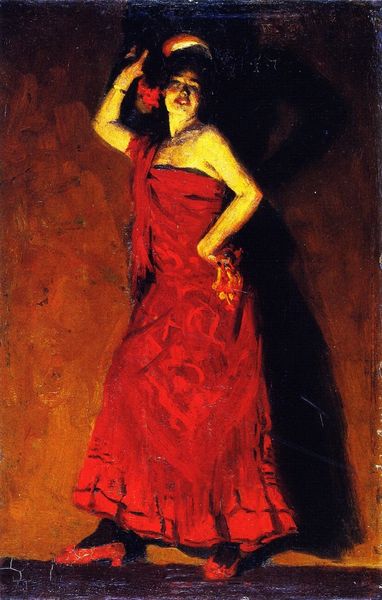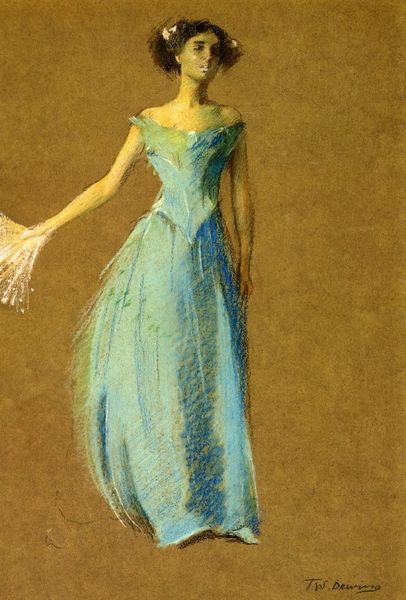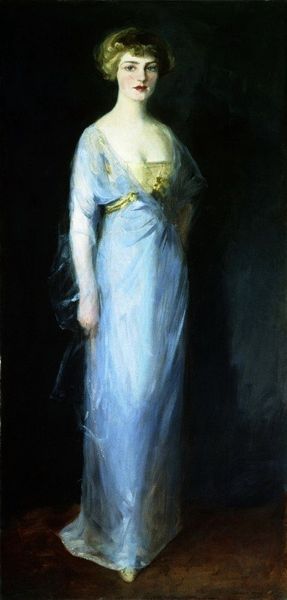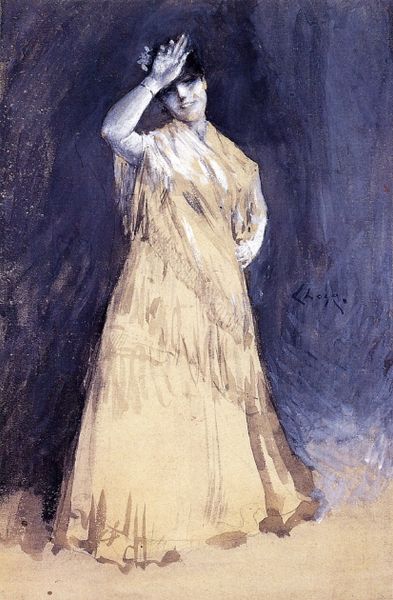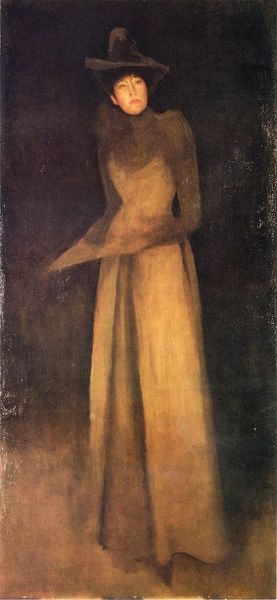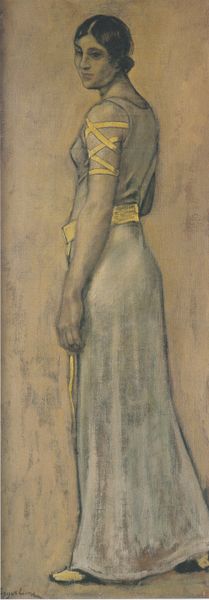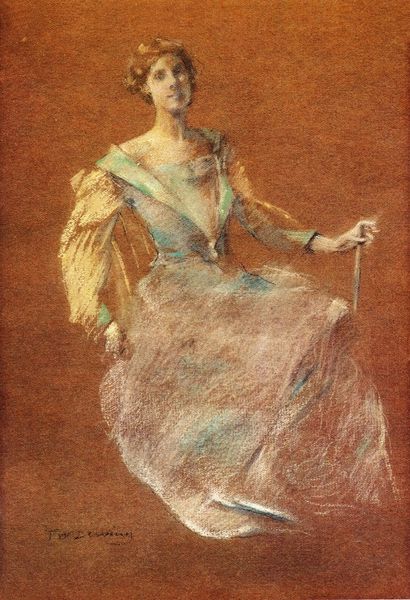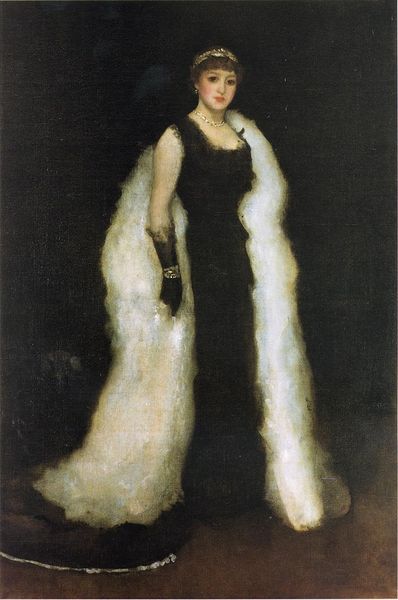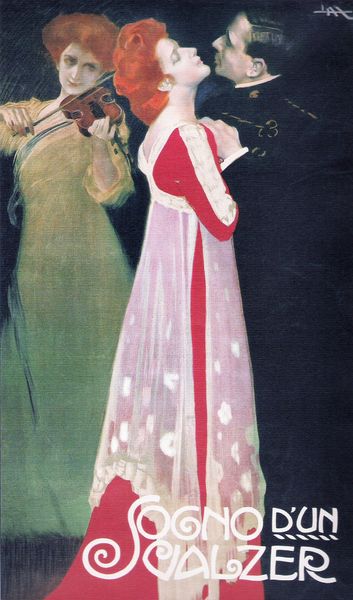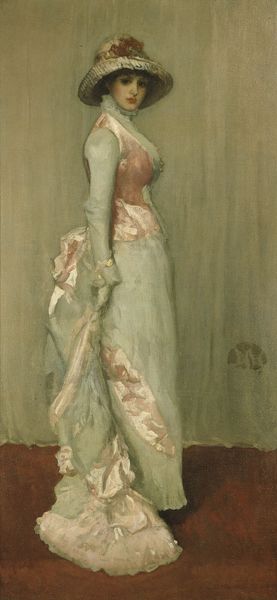
Dimensions: 90.9 x 191.4 cm
Copyright: Public domain
James McNeill Whistler painted this full-length portrait in oil on canvas. Though we can't date it precisely, we know it was made sometime in the 1870s, when Whistler began to embrace the aesthetic movement. The aesthetic movement championed ‘art for art’s sake,’ and as such, Whistler's painting departs from the Victorian period's didactic approach. The dark background throws the sitter's light dress into sharp relief, highlighting Whistler’s keen interest in the interplay of tones and shades. He gives us just enough information about the sitter, the fashionable Miss Dorothy Seton, and yet we know little about her character. Whistler was interested in the visual elements of the portrait, not its narrative possibilities. He invites the viewer to appreciate the formal qualities of the painting, rather than making moral judgments about the sitter. By considering the institutional history of art, alongside critical social histories, we can come to a richer understanding of the painting. Resources such as exhibition reviews, artist correspondence, and period publications, help us understand the aesthetic context in which Whistler was working.
Comments
No comments
Be the first to comment and join the conversation on the ultimate creative platform.
